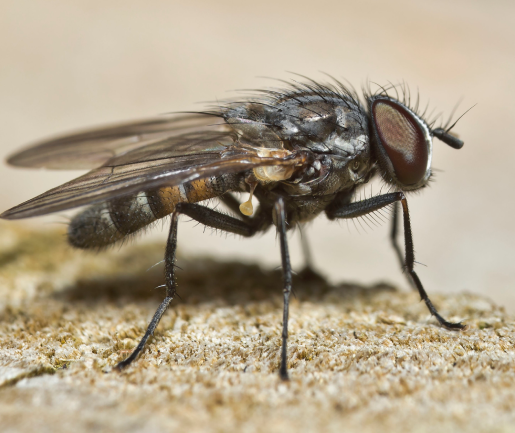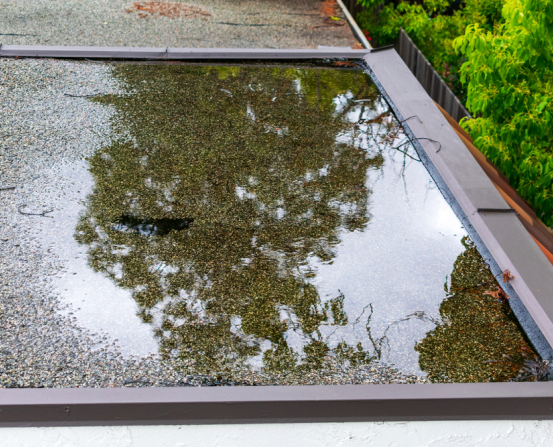Act Now - Limited Time Offer
$67 Pest Control

Jonathan Mitchell
Pest Control Technician
Chris Mosby
Pest Control Technician
Jackie Murphy
Sales Representative
Blow flies are larger than regular house flies, recognizable by their metallic sheen, often in shades of black, green, blue, or copper. These flies are known for their loud buzzing and are drawn to decaying meat to lay their eggs. Their life cycle varies, with larvae developing into adults in 7 to 15 days, depending on the species. They tend to infest areas with garbage, pet waste, and spoiled food, posing a serious nuisance to homes and businesses alike.
In Southern California, the Oriental latrine fly, a blow fly species, has been problematic since 1989. These flies thrive around dumpsters and shaded areas during hot months. If their larvae are found near a building, they can move indoors to complete their development, causing frustration when they mature. Good waste management and cleanliness are vital to stopping blow fly issues.


The little house fly (Fannia canicularis) has a distinct flight pattern, often hovering back and forth in open spaces without landing on food. This makes it less likely to contaminate food sources compared to the common house fly.
These flies lay eggs in decomposed plant material, compost, or pet waste such as that from rabbits and chickens. With a life cycle of around 24 days from egg to adult, they are primarily a nuisance due to their presence. However, since they prefer decaying matter, they pose less of a threat indoors.
The false stable fly, Muscina stabulans, is a bit larger and bulkier than a typical house fly. Its body is generally a dark gray. Unlike the true stable fly, the false stable fly does not bite. It can, however, enter homes and lay its eggs on slightly spoiled food.
Maggots of the false stable fly often thrive in animal waste and rotting plant material. The fly’s entire life cycle lasts around 14 days. While it’s not harmful in terms of biting, its presence indoors can be annoying, especially if it lays eggs. Recognizing its habits is key to managing these infestations.


The black garbage fly is a small, shiny black insect about 1/5″” in length. These slender flies thrive in areas with waste accumulation. Although not commonly found around homes in urban settings, they are more prevalent in rural zones, especially where regular waste collection is not practiced.
These flies have a short life cycle, developing within ten days in garbage. They often appear in areas where waste is poorly managed. Effective garbage disposal practices can help minimize their presence.
The stable fly resembles a house fly but has a sharp, slender beak used for biting. Unlike house flies, stable flies primarily stay outdoors and feed on livestock like horses and cattle. They occasionally bite humans, especially when they enter homes during rainy periods.
Stable flies are more than a minor annoyance; they can be a serious pest to livestock and pets. These flies thrive in areas with moist, decaying organic matter, manure, and straw soaked in urine. Reducing their population involves effective waste management. Regular cleanup and disposal of these materials can limit their presence.


Flesh flies (Sarcophaga species) are bigger than house flies and are easily recognized by their checkered abdomen. Their bodies are gray with black stripes along the thorax. Unlike other flies, flesh flies give birth to live maggots rather than laying eggs. The maggots thrive in decaying meat, animal remains, and excrement, especially dog waste. Flesh flies are often found around dead animals and decomposing snails.
With a life cycle that can take just eight days, flesh flies are usually drawn to rotting organic material. Spotting slow, large flies with a checkerboard pattern may indicate a flesh fly infestation.
Our comprehensive fly control service starts with a meticulous inspection of your property. We target potential breeding grounds, such as trash areas, standing water, and decomposing organic matter. Our experts also identify the presence of various fly species like blow flies, drain flies, and stable flies.
We thoroughly check your plumbing for leaks and blockages that might attract flies, utilizing specialized tools to locate larvae and adults in concealed spaces. By pinpointing problem zones, we customize our treatments to address the specific fly issues on your property.


Before our technician arrives, it’s important to clean both indoor and outdoor areas to assist in identifying the infestation more easily. Our specialists will inspect the property thoroughly, checking for underlying issues like plumbing problems that might contribute to the fly infestation.
For drain flies, we apply specific treatments to target active flies and larvae within the drains. We’ll also treat around food prep areas, ensuring no chemicals come into direct contact with surfaces used for food preparation. Fly traps are placed strategically where they are most likely to gather.
At Penryn Pest Control, our skilled technicians provide monthly inspections and treatments to tackle flies at the source. We focus on fly-prone areas such as drains, garbage zones, and stagnant water to prevent fly infestations.
Using safe and eco-friendly products, we treat various species, including drain flies, blow flies, and stable flies. Our monthly service ensures ongoing protection, so you can maintain a fly-free property year-round.


Limited time offer! Get $50 off your first pest control service.

Barrier Services
Penryn Office
© Penryn Pest Control 2024